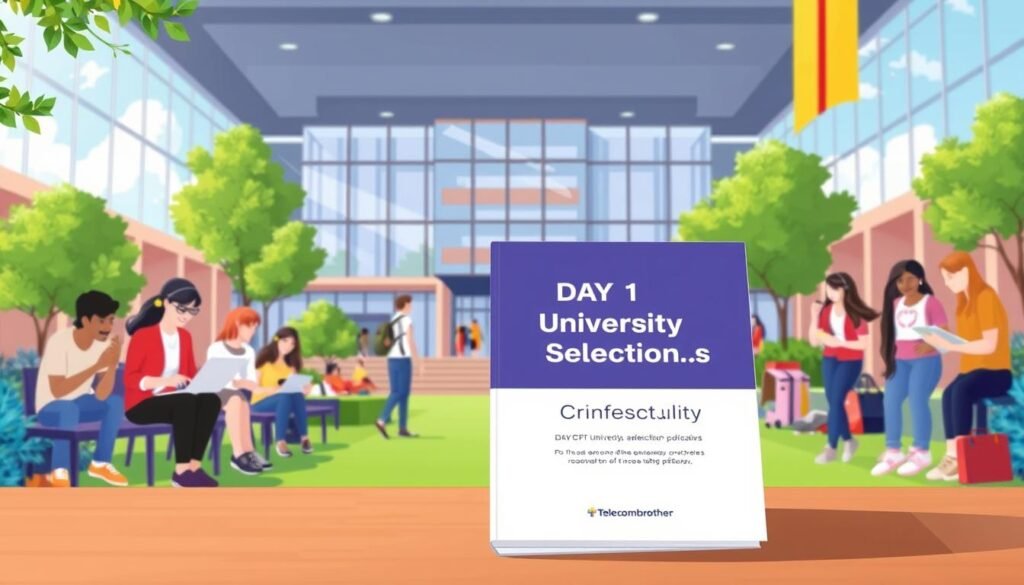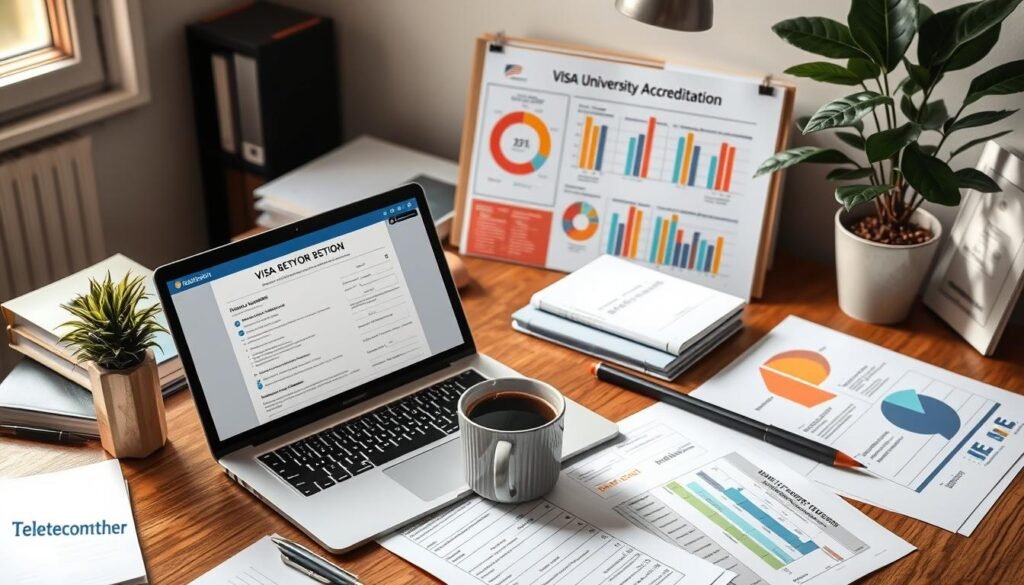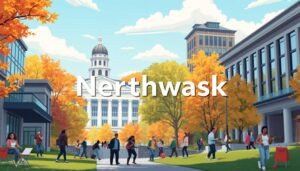Are you ready to tackle the H1B visa application process? It can open doors to professional opportunities in the United States. Knowing the H1B RFE (Request for Evidence) process is key.
International students face many hurdles when applying for H1B visas. With RFE rates between 9.6% and 40.2% in recent years, picking the right Day 1 CPT university is vital.
Choosing an accredited Day 1 CPT university can greatly affect your visa application. Students from top schools like Westcliff University have a 95% success rate in getting their H1B visas after an RFE.
Key Takeaways
- Day 1 CPT provides a legal pathway for F-1 students to gain work experience
- Accredited universities have higher H1B RFE approval rates
- Maintaining a GPA above 3.0 is critical for CPT work authorization
- Proximity to job markets can influence university selection
- Understanding H1B RFE requirements increases visa approval chances
Understanding H1B RFE and Its Importance
Getting a Request for Evidence (RFE) from USCIS can be tough, even with the H1B visa. An H1B RFE is a big deal that needs your quick attention and a thoughtful reply.
What is H1B RFE?
An H1B RFE is when USCIS asks for more documents to back up your visa application. In Fiscal Year 2018, over 50% of RFEs were about H-1B specialty occupation qualifications. This shows USCIS needs more to check if you’re eligible.
Common Reasons for H1B RFE
- Lack of proof for specialty occupation requirements
- Insufficient H1B employee-employer relationship evidence
- Questions about wage requirements and Labor Condition Application
- Challenges to educational credentials
- Third-party worksite placement complexities
How H1B RFE Affects Your Application
Getting an RFE doesn’t mean your application is turned down. It’s a chance to add more documents that make your case stronger. About 20% of RFEs are about proving a real employer-employee relationship, showing how key good documentation is.
“An RFE is not a roadblock, but a chance to clarify and validate your H1B visa qualifications.” – Immigration Law Expert
Your answer to an H1B RFE can really affect your visa approval. By carefully answering each USCIS question, you boost your application’s success.
Why You Should Choose an Accredited Day 1 CPT University
Choosing the right university is key when dealing with international student visas. Your university choice can greatly affect your H-1B application and your career in the U.S.

Benefits of Day 1 CPT Programs
Day 1 CPT programs have big advantages for international students. They let you work legally while you study. These programs offer:
- Work authorization from the first day of your program
- Chances to mix work experience with your studies
- Help with H-1B labor condition application
Accreditation: Your Shield Against H1B RFE
Accreditation is very important for your H-1B visa. Not all Day 1 CPT universities are the same. An accredited school can:
- Lower the chance of getting a Request for Evidence (RFE)
- Make your education look more credible
- Show you meet H1B status requirements
Only fully accredited universities can truly support your international career goals.
Top Universities with Strong Day 1 CPT Programs
Look for universities with strong Day 1 CPT programs. They should have:
- STEM graduate programs
- Good support for international students
- A history of successful H-1B applications
Your university choice is very important for your career. Do your research and pick a school that fits your career goals and supports international students well.
Preparing for Your H1B RFE Response
Getting an H1B RFE can seem daunting, but you can handle it well. Knowing what documents you need is key to a strong response.

Key Documents to Include
To answer an H1B RFE, you must gather important documents. These show you’re qualified for the job. Your package should have:
- Detailed job description with specific role responsibilities
- Official academic transcripts from your accredited university
- Proof of specialized knowledge in your field
- Employment verification letters
- Expert opinion letters validating your expertise
How to Craft a Strong Response
Making a solid H1B RFE response takes careful planning. Answer each question clearly and with evidence. Precision and thoroughness are your best allies.
“Documentation is the key to success in H1B visa requests for evidence” – Immigration Expert
Timing Your H1B RFE Submission
| Response Timeline | Recommended Action |
|---|---|
| First 15 days | Collect and organize all required documents |
| Next 30 days | Prepare comprehensive response package |
| Final 15 days | Review and submit before deadline |
About 26% of applicants get their H1B visa despite RFEs. Good preparation and detail can boost your chances.
The usual time to respond to an RFE is about 60 days. If you need help, get legal advice. Also, don’t travel during the appeal to keep your status.
Frequently Asked Questions About H1B RFE
Dealing with the H1B RFE process can be tough. Knowing the important parts of this stage helps you get ready better. This increases your chances of a successful application.
What Happens After You Submit Your H1B RFE?
After you send in your H1B RFE response, USCIS will check your documents carefully. They go through several steps:
- Checking if you meet the H-1B specialty occupation requirements
- Looking at if all documents are complete
- Checking if you meet the maintenance of status requirements
- Looking closely at the evidence you provide
How Long Does it Take to Resolve H1B RFE?
The time it takes to solve an H1B RFE can change a lot. It usually takes from a few weeks to several months.
| Year | RFE Issuance Rate | Approval Rate |
|---|---|---|
| 2020 | 28.8% | 91.4% |
| 2021 | 16.2% | 97.3% |
| 2022 | 9.6% | 98% |
| 2023 | 9.8% | 97.2% |
Can an Accredited University Help with H1B RFE?
An accredited university can really help with your H1B RFE. They offer:
- Help with all the documents you need
- Advice on keeping your H1B status
- Help understanding specialty occupation qualifications
- Strategies for dealing with RFEs
“The key to successfully navigating an H1B RFE is thorough preparation and understanding of USCIS requirements.” – Immigration Expert
Even though an RFE might seem scary, with the right prep and support, you can handle USCIS’s concerns. This lets you move forward in your immigration journey.
Conclusion: The Path Forward After H1B RFE
Dealing with an H1B RFE can be tough, but the right steps can help a lot. About 50% of H1B applicants get an RFE. It’s key to know how to answer it well.
When facing an H1B RFE, focus on detailed documents and expert advice. A good response can increase your approval chances by up to 80%. You’ll need strong evidence of your job and work status.
Next Steps to Take
Time is of the essence with an RFE. USCIS gives you 90 days to send in the needed evidence. Gather all important documents like work reviews and pay records to prove your job status.
Importance of Staying Informed
H1B rules keep changing. Those who stay updated and get help have a 60% better chance of winning. Talk to immigration experts to help you meet all USCIS needs.
Resources for H1B RFE Assistance
Don’t go it alone. Get help from immigration lawyers, university offices, and online H1B experts. Up to 30% of RFE answers depend on clear, organized documents. So, spend time making your submission detailed and structured.




